We have just spent a few days in Puno and touring Lake Titicaca, which stradles Bolivia and Peru. Along the way our bus boarded a raft on the lake, not much bigger than the bus itself, and we watched it cross from a small powerboat, placing bets as to whether the bus would make it. Fortunately it did and 30 minutes later we were into Peru.
Puno is much smaller than we imagined, we had heard a lot from people so I guess we thought it was going to be larger
. Sitting on the edge of Titicaca it has one major strip that is full of banks, tour offices, bars and restaurants, which leads into the main plaza where a nice Cathedral sits. A huge condor monument looks down from the small mountain above. After a day and night around the town we are up early to explore the lake, which claims to be the highest navigable lake in the world at 3,860m though it depends who you ask as according to one guide there is two other 'navigable' lakes in South America that are higher but are much smaller. Either way it is beautiful, you can see the snow capped Andes in the distance and an expanse of water so great it looks like it is the ocean - it is 120 miles by 50 miles at its longest and widest points. We have really been looking forward to it as we will be staying with a local family for the night in a near by town down the coast from Puno.
We join our small boat just our group of 10, our tour leader, our new local guide (Carlos) and the skipper (and his wife who knits at the back of the boat for the two days he ferry´s us around)
. The day is sunny with a lovely breeze and we cruise across the water to Taquile island, nearly 40km east of Puno, home to nearly 3,000 people. It is a narrow, long island that seems to be one big squashed hill. The Taquile people are renowned in the area as being the best weavers and textilers in Peru and some say all of South America. After a lunch on the side of the hill at a local house where we were taught some local dances we headed up to the main square at the very top of the hill to see the weaving in action and purchase a few goods. You can certainly buy the items of offer cheaper in Peru but the quality is outstanding here. Colouful hats, scarves, gloves, shirts and jumpers, all the proceeds of which goes to the person that made the item. So each one you pick up has a code which refers to one of the weavers on the island. Julie and I purchased a few Christmas presents.
From here we headed to our home stay which is an hour away back on the coast. We are welcomed by the men of the community who play some drums and shake our hands
. The village is a few hundred people that farm the land near the lakeside, a simple way of life. We could see a few people out in the fields with their animals and make shift ploughs being dragged by cows. Almost immediately we are challenged to a game of football on their concrete seven a side pitch in the main square. At this altitude it would be hard enough without us having only five guys in our group, only two of which can actually play, plus our two tour guides, one who is a tad large. We are five down after 10 minutes before we pull it back to a respectable 10 to 4 scoreline. We are then challenged to a game of first to two, losers buy the winners beer, amazingly we win 2 nil but we offer to buy the drinks anyway.
After this we are introduced to our families that we will be staying with and Julie and I are put with their star player Wilfred who tried to mark me out of the game. He is a lovely guy, 29 years old, married with four children and another on the way, a busy boy
. We walk down to his house and get a tour. There is three buildings that are joined. The main part of the building is where he and his family stay, one on side of this is the guest bedroom for us to stay in and on the other is the kitchen. The building is Adobe, a mud hut in essence and it is surrounded by a variety of animals that he proudly shoes off to us. Three cows, two piglets, 6 sheep, 2 llamas, numerous chickens and a goat (we think). He farms the land and takes some of it to market each Sunday to trade for goods. After a few game of cards with the kids and giving them some presents and food we bought for them in Puno we head to dinner n the kitchen. It is a very humbling experience as we hunch on a low wooden bench with the whole family eating with them. The food is very wholesome and tasty, we watch Isabel (mum) stir the pots as she sits on the floor in front of the open fire stove, which although has a chimney still wafts a great deal of smoke into the space, which over time has cloaked the walls black. Even though these people have so little it is amazing to see how regularly they smile and the grace in which they live
.
After dinner we are given local dress to wear and head back to the swquare for dancing, which was great fun, although I managed to drop my camera and break it (NOTE: it provided an error code, which I googled a few days ago and in the discussion forums to rectify it the solution is to drop it again, amazingly it is back working again!). After breakfast and another chat in broken English and Spanish we say our goodbyes. We both felt very moved by our short time with Wilfred and his family and Julie and I decide we will send some Christmas presents to them in a few weeks.
Probably the best known people in and around Titicaca are the Uros people who live on 49 floating islands made of reeds (totora, a reed that grows in the shallows of the lake), which is where we head next. They were originally built to escape the Incas and other groups in the area and later the Spanish as they can be moved easily, they are held down literally by 4 spear anchors
. So if you fall out with the neighbours you just up and move. Each one is about 30 metres squared housing about 15-25 people. New reeds are added every week. The reeds are straw coloured and also form the constructions, the houses and watch towers, from the watch tower you can see pretty much all the islands in a grouping with narrowish straits between them, it looks like a movie set, a small version of Waterworld or something. We are invited into houses and get an explanation of how they live, whilst this experience has defintely been turned into a tourist attraction it is still pretty amazing to see, as boats cruise by you can see a ripple move across the island. God help them in a big storm.
Back at Puno we take a late afternoon trip to an Inca site, Silustani, to give us a grounding for Machu Picchu next week.
Puno and Lake Titicaca
Sunday, November 30, 2008
 Puno, Peru
Puno, Peru
Other Entries
-
1Launch minus 2 days
Oct 2833 days prior London, United Kingdomphoto_camera0videocam 0comment 1
London, United Kingdomphoto_camera0videocam 0comment 1 -
2Living on the Copacabana
Nov 0129 days prior Rio de Janeiro, Brazilphoto_camera14videocam 0comment 0
Rio de Janeiro, Brazilphoto_camera14videocam 0comment 0 -
3Walking, Football, Christ the Redeemer and Lewis
Nov 0426 days prior Rio de Janeiro, Brazilphoto_camera14videocam 0comment 1
Rio de Janeiro, Brazilphoto_camera14videocam 0comment 1 -
4The Sugar ´Loaf´ Daddy
Nov 0426 days prior Rio de Janeiro, Brazilphoto_camera5videocam 0comment 0
Rio de Janeiro, Brazilphoto_camera5videocam 0comment 0 -
5Juice bars of Rio and the Favela children
Nov 0426 days prior Rio de Janeiro, Brazilphoto_camera0videocam 0comment 0
Rio de Janeiro, Brazilphoto_camera0videocam 0comment 0 -
6Start of the Southern Cross journey
Nov 0525 days prior Rio de Janeiro, Brazilphoto_camera0videocam 0comment 1
Rio de Janeiro, Brazilphoto_camera0videocam 0comment 1 -
7Ilha Grande
Nov 0624 days prior Ilha Grande, Brazilphoto_camera10videocam 0comment 3
Ilha Grande, Brazilphoto_camera10videocam 0comment 3 -
8The charm of Paraty
Nov 0822 days prior Paraty, Brazilphoto_camera11videocam 0comment 1
Paraty, Brazilphoto_camera11videocam 0comment 1 -
9The power of Iguassu Falls - Foz do Iguacu
Nov 1218 days prior Foz do Iguacu, Brazilphoto_camera12videocam 0comment 1
Foz do Iguacu, Brazilphoto_camera12videocam 0comment 1 -
10Snorkeling in Bonito
Nov 1416 days prior Bonito, Brazilphoto_camera1videocam 0comment 0
Bonito, Brazilphoto_camera1videocam 0comment 0 -
11Pantanal, Piranha and Pests
Nov 1614 days prior Pantanal, Brazilphoto_camera15videocam 0comment 2
Pantanal, Brazilphoto_camera15videocam 0comment 2 -
12Bolivia - Quijarro, the Death Train and Santa Cruz
Nov 2010 days prior Santa Cruz, Boliviaphoto_camera2videocam 0comment 2
Santa Cruz, Boliviaphoto_camera2videocam 0comment 2 -
13Sucre - The White City
Nov 219 days prior Sucre, Boliviaphoto_camera3videocam 0comment 1
Sucre, Boliviaphoto_camera3videocam 0comment 1 -
14The road to Potosi
Nov 228 days prior Potosi, Boliviaphoto_camera9videocam 0comment 3
Potosi, Boliviaphoto_camera9videocam 0comment 3 -
15Uynui and the salt plains
Nov 246 days prior Uyuni, Boliviaphoto_camera20videocam 0comment 0
Uyuni, Boliviaphoto_camera20videocam 0comment 0 -
16La Paz and the "Death Road"
Nov 282 days prior La Paz, Boliviaphoto_camera5videocam 0comment 3
La Paz, Boliviaphoto_camera5videocam 0comment 3 -
17Puno and Lake Titicaca
Nov 30 Puno, Peruphoto_camera10videocam 0comment 1
Puno, Peruphoto_camera10videocam 0comment 1 -
18No change for notes....ever!
Dec 033 days later Cusco, Peruphoto_camera0videocam 0comment 0
Cusco, Peruphoto_camera0videocam 0comment 0 -
19The Inca Capital - Cusco
Dec 044 days later Cusco, Peruphoto_camera10videocam 0comment 1
Cusco, Peruphoto_camera10videocam 0comment 1 -
20Machu Picchu
Dec 1010 days later Aguas Calientes, Peruphoto_camera12videocam 0comment 0
Aguas Calientes, Peruphoto_camera12videocam 0comment 0 -
21Arequipa and the Colca Canyon
Dec 1414 days later Arequipa, Peruphoto_camera9videocam 0comment 0
Arequipa, Peruphoto_camera9videocam 0comment 0 -
22Nazca
Dec 1515 days later Nasca, Peruphoto_camera6videocam 0comment 0
Nasca, Peruphoto_camera6videocam 0comment 0 -
23Pisco Sour
Dec 1717 days later Pisco, Peruphoto_camera6videocam 0comment 0
Pisco, Peruphoto_camera6videocam 0comment 0 -
24Lima, 'City of the Kings'
Dec 2121 days later Lima, Peruphoto_camera10videocam 0comment 1
Lima, Peruphoto_camera10videocam 0comment 1 -
25Colombia Landing - Bogota
Dec 2424 days later Bogota, Colombiaphoto_camera5videocam 0comment 0
Bogota, Colombiaphoto_camera5videocam 0comment 0 -
26Cartagena - fairytale city of romance and legend
Jan 0132 days later Cartagena, Colombiaphoto_camera20videocam 0comment 0
Cartagena, Colombiaphoto_camera20videocam 0comment 0 -
27Santa Marta and Taganga
Jan 0334 days later Santa Marta, Colombiaphoto_camera0videocam 0comment 0
Santa Marta, Colombiaphoto_camera0videocam 0comment 0 -
28Stuck in Maracaibo
Jan 0435 days later Maracaibo, Venezuelaphoto_camera0videocam 0comment 0
Maracaibo, Venezuelaphoto_camera0videocam 0comment 0 -
29Merida - South America's adventure capital
Jan 0738 days later Merida, Venezuelaphoto_camera7videocam 0comment 0
Merida, Venezuelaphoto_camera7videocam 0comment 0 -
30Caracas
Jan 0940 days later Caracas, Venezuelaphoto_camera5videocam 0comment 4
Caracas, Venezuelaphoto_camera5videocam 0comment 4 -
31Into the wild - Canaima and Angel Falls
Jan 1243 days later Canaima National Park, Venezuelaphoto_camera13videocam 0comment 0
Canaima National Park, Venezuelaphoto_camera13videocam 0comment 0 -
32Buenos Aires - Tango Central
Jan 1546 days later Buenos Aires, Argentinaphoto_camera0videocam 0comment 0
Buenos Aires, Argentinaphoto_camera0videocam 0comment 0 -
33Mendoza - In the wine country
Jan 1950 days later Mendoza, Argentinaphoto_camera0videocam 0comment 2
Mendoza, Argentinaphoto_camera0videocam 0comment 2 -
34Vaparaiso - home of Bohemia
Jan 2253 days later Valparaiso, Chilephoto_camera0videocam 0comment 0
Valparaiso, Chilephoto_camera0videocam 0comment 0 -
35Santiago - saying goodbye to South America
Jan 2455 days later Santiago, Chilephoto_camera0videocam 0comment 0
Santiago, Chilephoto_camera0videocam 0comment 0
Comments
2025-05-22
Comment code: Ask author if the code is blank

 Puno, Peru
Puno, Peru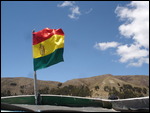

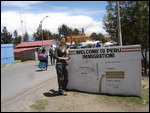
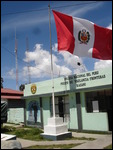
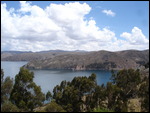









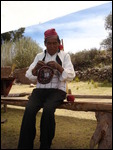
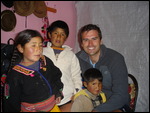
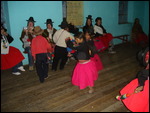
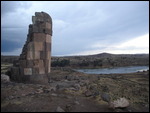
justinmckeown
2008-12-31
Cheers
Thanks J & J. Just got your postcard too. : ) You should be Twittering (from your Blackberry).
Happy New Year, wherever you are!